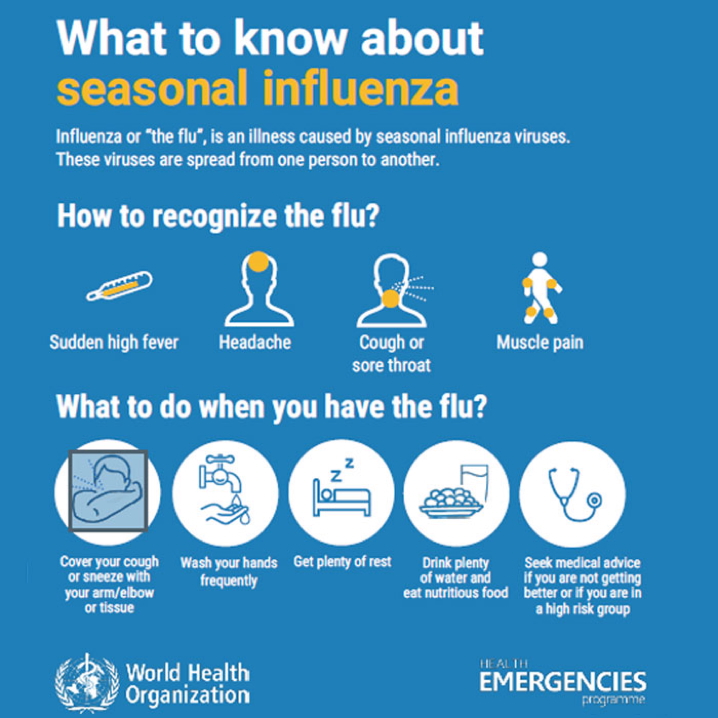Table of Contents
Overview – Seasonal Influenza
Seasonal influenza is a highly contagious respiratory illness caused by influenza A and B viruses, with global outbreaks typically occurring in winter. It presents with acute onset of fever, myalgia, fatigue, and respiratory symptoms. While most cases are self-limiting, influenza can lead to serious complications—especially in the very young, elderly, or immunocompromised. Annual vaccination remains the cornerstone of prevention.
Definition
Seasonal influenza refers to acute respiratory infection caused by influenza virus A or B, resulting in epidemic patterns of illness each year.
Aetiology
- Influenza Virus Types A & B
- Type A: Associated with pandemics (due to antigenic shift)
- Type B: Causes more localised seasonal outbreaks
Pathogenesis
- Transmission via airborne droplets or direct contact
- Incubation period: 1–4 days
- Patients are contagious:
- 1 day before symptom onset
- Up to 7 days after onset
- Virus infects respiratory epithelium → epithelial dysfunction and cell death → inflammation and systemic symptoms
Clinical Features
Symptoms
- Sudden onset:
- High fever (can reach >40°C)
- Chills
- Myalgias and arthralgias
- Fatigue and malaise
- Headache
- Dry cough
- Sore throat
- Nasal congestion
Signs
- Febrile, flushed appearance
- Clear chest auscultation (unless secondary pneumonia)
- Occasionally cervical lymphadenopathy
Complications
- Secondary bacterial pneumonia
- Commonly Strep pneumoniae or Staph aureus
- Acute otitis media
- Acute sinusitis
- Rhabdomyolysis (rare)
- Exacerbation of underlying chronic diseases (e.g. asthma, COPD)
Investigations
- Clinical diagnosis is usually sufficient during flu season
- Optional:
- Nasopharyngeal swabs (PCR or rapid antigen testing)
- Serology (for epidemiological purposes)
- CXR: Usually normal, but done to rule out pneumonia if clinically indicated
Management
Supportive Care (Mainstay)
- Bed rest
- Adequate hydration
- Paracetamol or NSAIDs for fever/myalgia
- Antitussives and nasal decongestants
Antiviral Therapy
- Consider if:
- Presentation within 48 hours of symptom onset
- High-risk patients (elderly, pregnant, immunocompromised, comorbidities)
- Options:
- Oseltamivir (Tamiflu®)
- Zanamivir (Relenza®)
- Modestly reduce symptom duration (by ~24 hours)
Prevention
Influenza Vaccination
- FluVax: Updated annually to reflect circulating serotypes
- Recommended for:
- All individuals >6 months
- Especially healthcare workers, elderly, pregnant women, and those with chronic diseases

Summary – Seasonal Influenza
Seasonal influenza is a viral respiratory illness caused by influenza A and B viruses, with symptoms including fever, myalgia, cough, and fatigue. While most cases resolve with supportive care, antivirals may be considered in high-risk patients. Annual vaccination is key to prevention. For broader context, visit our Respiratory Overview page.